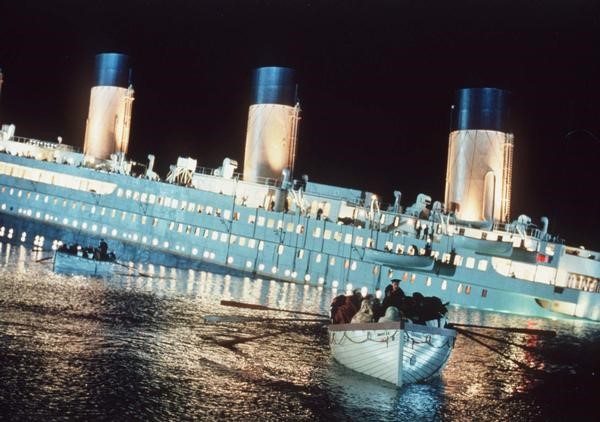
James Cameron’s movie version of the sinking the Titanic is exceptional in that it focuses on a part of the Titanic story that every previous film had ignored: the reality of the hundreds of passengers who were still alive and screaming for help in the freezing waters of the Atlantic long after the ship had disappeared.
The raw numbers of the Titanic disaster were as chilling as the water.
There were 2,223 souls on board when the boat hit the iceberg. The ship was equipped with twenty lifeboats, having a total capacity of 1,178.
Even though there was room for more than half the passengers to be saved, a mere 705 were rescued.
The difference between the lifeboat capacity of 1,178 and 705 is 473. At least that many people were still alive and thrashing about in the water for many minutes after the Titanic sank.
Why didn’t the lifeboats, which were only partially filled, go back to rescue them?
We know the answer to that question. In sworn testimony presented in the hearings that followed the disaster, conversations in the lifeboats were reconstructed.
In lifeboat 8, several passengers strenuously pressed for going back. One said out loud that he would rather die with those in the water than row off and be safe. But the majority overruled him, arguing that desperate, drowning people would surely capsize them. “It’s no use going back for a lot of stiffs,” said Quartermaster Hichens.
In lifeboat 1, Charles Hendricksen proposed going back to pick up some of those in the water. But Lady Duff Gordon muttered something about the danger of being swamped. Her husband, Sir Cosmo Gordon, offered five pounds to each of the crewmen aboard not to row them back. The other male passengers agreed that a rescue would be dangerous.
Lifeboat 1 held only 12 people. It could have carried 40.
One of the lifeboats, which was filling with water, needed to be bailed out. A crew member asked to borrow the hat of one of the men who was there so he could start bailing, but the man refused. Even though he was soaked to the skin with freezing water, the man said, “If I give you my hat, I might catch cold in the night air.”
In the end, only lifeboat 14 went back. By the time it responded it was able to save just three people.
What is most disturbing is how similar those lifeboat conversations are to discussions that are regularly heard today in our own family rooms and board rooms – debates as to whether we should extend care to those in the inner city, or reach out to the rural poor, or target the needs of people pleading for financial help, or serve as advocates for those who are too small or too silent to have a voice of their own.
“We can’t go help those people. We don’t have a budget for that. They’ll pull us under. Isn’t there some agency that’s supposed to help? It’s probably too late, anyway. They’re just a bunch of stiffs. We have to take care of us.”
But our lifelong job assignment is not to take care of us. It is to lay down our agendas to take up the agenda of the God who cares for those in deepest need.
Or to put it another way: Our place is in lifeboat 14.
On our way back.
